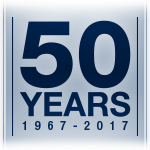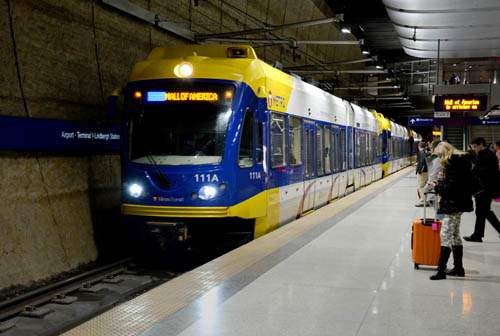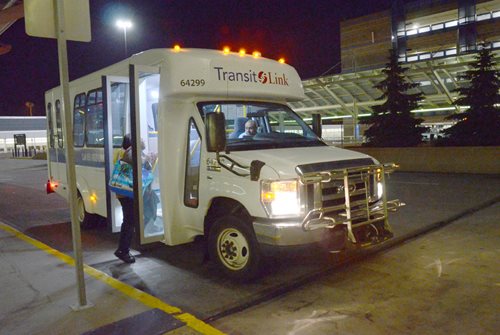 Though differing in mission and perspective, the Metropolitan Airports Commission and the Metropolitan Council have a history of working together to produce positive results that benefit the entire metro area.
Though differing in mission and perspective, the Metropolitan Airports Commission and the Metropolitan Council have a history of working together to produce positive results that benefit the entire metro area.
“The MAC and the Council have experienced some difficult discussions and negotiations at times, but we’ve enjoyed a very strong partnership. To this day, we work together very closely, primarily on transit issues,” said Denny Probst, Chief Operating Officer of the Airports Commission.
Building an LRT tunnel under the airport
 In the January cold of 2001, officials broke ground to kick off the construction of the Hiawatha light rail line, the region’s first, running from downtown Minneapolis to the Mall of America in Bloomington. MnDOT oversaw construction of the line.
In the January cold of 2001, officials broke ground to kick off the construction of the Hiawatha light rail line, the region’s first, running from downtown Minneapolis to the Mall of America in Bloomington. MnDOT oversaw construction of the line.
Two of the 17 light rail stations of the Hiawatha Line (later renamed the Blue Line) were planned for Minneapolis-Saint Paul International Airport – one to serve each terminal. A tunnel would be dug starting just north of the MAC’s airport property, go under the Lindbergh Terminal complex, then continue under the airport’s two parallel runways, and emerge near the Humphrey Terminal.
MAC was concerned that digging the tunnel could jeopardize the structural integrity of the runways and the Lindbergh Terminal complex. The commission sought to exercise more direct control over tunnel construction.
“We’ve seen great success with airport-related transit services. It’s been a huge benefit to us and to the employees out here. It’s an example of how we help each other and the greater community.”
- Denny Probst, Chief Operating Officer, Metropolitan Airports Commission
The Council, on the other hand, was concerned about serious cost overruns and delay of completion.
“Boston’s notorious ‘Big Dig’ project was in the news at the time,” said current Council Member Jennifer Munt, who then led public outreach for the rail project. “People were very scared that tunneling could delay the project and increase the cost.”
Negotiations yield to agreement and construction
 After tough negotiations, the parties agreed that MAC would oversee construction of its own segment of the light rail line, with assurances of rigorous commission oversight. “Once we got past that issue, we had a very cooperative process from there forward. All went very smoothly,” Probst said.
After tough negotiations, the parties agreed that MAC would oversee construction of its own segment of the light rail line, with assurances of rigorous commission oversight. “Once we got past that issue, we had a very cooperative process from there forward. All went very smoothly,” Probst said.
As history shows, the Hiawatha Line opened in 2004 – on time and on budget.
Today, the MAC works in close cooperation with Metro Transit’s Systems Operating Center at the airport, and in ongoing work involving the tunnel and light rail operations.
Transit essential for passengers and employees
“There’s a strong and growing recognition that we need a high level of transit access to provide land-side access to the airport,” Probst said. “We see business travelers on day trips, for example, who ride light rail to downtown Minneapolis instead of driving. They see the advantage of having an almost guaranteed ride time to get from their office to the airport.
“One thing we did not anticipate turned out to be a huge opportunity for us and for employees at the airport. A sizable number of airport employees live along the light rail corridor, and a significant percentage use light rail to and from work.”
One innovation is the free train shuttle service between the two airport terminals in the early a.m. hours when trains are not operating on the full Blue Line, explained Mark Fuhrmann, now Metro Transit’s Deputy General Manager for Transit Systems Development.
 “This service has been invaluable for airline staff, MAC staff and the public who have a need to move between terminals to fly a plane, ride in a plane or support MAC operations,” Fuhrmann said. Through a carefully negotiated service agreement, MAC pays the Council to provide the service.
“This service has been invaluable for airline staff, MAC staff and the public who have a need to move between terminals to fly a plane, ride in a plane or support MAC operations,” Fuhrmann said. Through a carefully negotiated service agreement, MAC pays the Council to provide the service.
Getting workers to the airport in the wee hours
Some employees go on duty very early in the morning to open for food and other vendors or work late at night to serve customers arriving or departing on red-eye flights. Many are people with low incomes and new Americans who need transit when regular-route service is not an option.
For the last three years, Metro Transit’s Blue Line has operated a daily early-morning southbound trip from the Cedar Riverside station that’s timed to reach the airport for work shifts starting at 4:00 a.m.
Metro Transit added trips on the Red Line to accommodate early airport shifts, and expanded early morning service on the #54 bus route. The Council also operates small buses for airport workers working these shifts, three-quarters of whom live in various neighborhoods in Saint Paul, with some in Burnsville, Bloomington, Richfield and Eagan.
Transit service drives revenue at airport businesses
“The [added transit] service has helped drive revenue,” said Butch Howard, general manager of HMS Host, which operates about 40 food and beverage franchises at the airport. “We are now able to open up all of our Starbucks, French Meadow Bakery and Market outlets at 4:30 a.m.”
“We’ve seen great success with airport-related transit services,” Probst said. “It’s been a huge benefit to us and to the employees out here. It’s an example of how we help each other and the greater community.”
Did you know?
In 2016, an estimated 2,000,000 people arrived at MSP International Airport via Metro Transit bus and rail service.